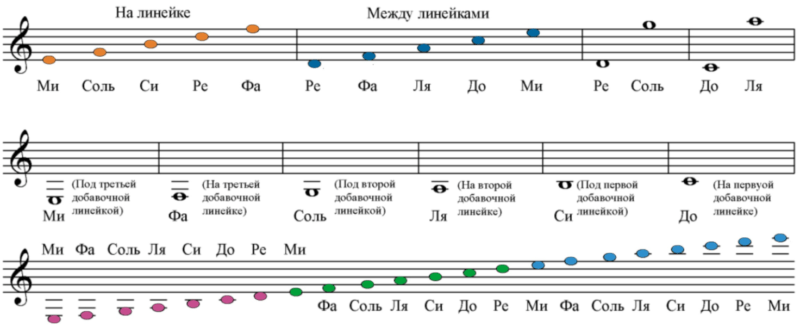
Synthesizer lessons
Contents
An electronic instrument provides more functionality than acoustics . Supports fewer octaves, so it has fewer keys than a traditional piano, making it much easier to learn how to play the synthesizer from scratch.
Can you learn to play on your own?
Considering how to learn how to play the synthesizer , let’s start with the fact that each instrument has mechanisms for configuring characteristics, sound duration, which makes it possible for the new to experiment.
Semi-professional options include training programs, using which it is possible to start playing on your own from scratch.
- Take the online course “Piano is easy” . Perhaps the best course on piano and synthesizer e in runet.
Introduction to the instrument
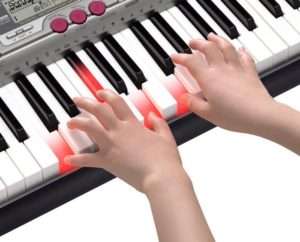 Thanks to the illuminated keyboard, the instrument will tell you how to correctly extract notes, chords , and follow the rhythm. The built- in auto accompaniment is able to play the missing chords instead of a human . So it’s much easier than even, for example, on the guitar.
Thanks to the illuminated keyboard, the instrument will tell you how to correctly extract notes, chords , and follow the rhythm. The built- in auto accompaniment is able to play the missing chords instead of a human . So it’s much easier than even, for example, on the guitar.
Game principles
It is important to realize that two hands are involved in the lion’s share of musical instruments in the game. In this particular situation, the works are based on the principle: the left is accompanying, the right is solo. So look at the keyboard. Be sure to make sure that it is of normal size so that you do not have to learn again later.
Musical notation
What do you need to make sure that synthesizer lessons are effective? First, get familiar with the octave. These are the repeating elements that the keyboard of the instrument is based on. It is possible to find the names of octaves in books on musical education: first, big, small, etc. However, they are on the piano, piano. And on the synthesizer there are fewer of them. Therefore, carefully examine the documentation for the instrument and understand which octaves it includes. The first is always there, the countdown of others starts from it. The synthesizer resembles a piano, the number of octaves varies.

Reading music
Fragments of a note are a collection of symbols. The head is a white or black oval showing which note to play for the performer. A thin vertical line is combined with the element – a calm, which is directed up and down, which does not affect the characteristics of the note, but serves for convenient interaction with the stave. The end ends with a flag aimed at the right side. Combining 3 fragments forms data for the musician about the duration of the note and sound.
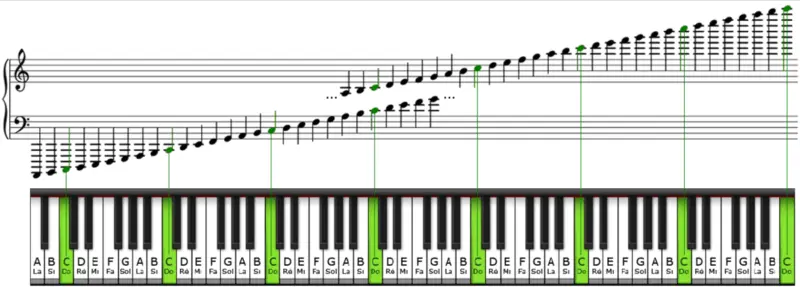
Note and rest durations
Sit down at the instrument, click the key and after counting to 4, release. This is a whole note.

Here is a whole pause (the duration is similar – 4 counts).

To play a half note, count to two, press the key, press again, calculate the missing 3-4. Thus, this half note is indicated on the letter:
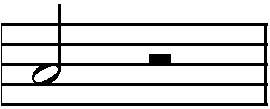
Quarter note. For each account, press a key. Looks:

An eighth is half as long as a quarter. This means that you need to play 2 notes per count. For convenience, it is better to speak to yourself like this: one-and-two-and-three-and-four-and. On the letter she is depicted with a ponytail:
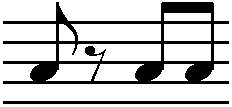
In the image above, there is an eighth note, a pause and two eighth notes united together (they are united by tails)
There are 16ths:
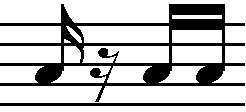
and 32nd:
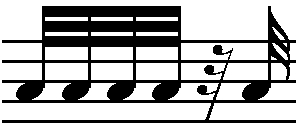
Built-in Voices
Timbre is the sound that a particular musical instrument has in an orchestra or is made digitally. The instruments can play over 660 sounds and use additional built-in sounds .
Traditionally, there are up to 300 timbres that reflect the sound of various musical instruments – traditional, national, non-orchestral and many created sounds.
Auto Accompaniment
 Synthesizers with auto accompaniment are well-known, in addition to numerous timbres , they have a selection of automatic accompaniment. Therefore, they are used to accompany the music of various holidays, as a cheaper replacement for a live band. With some practice, it is possible, using a sewn-in set of styles, making your own, to play any modern composition truthfully enough.
Synthesizers with auto accompaniment are well-known, in addition to numerous timbres , they have a selection of automatic accompaniment. Therefore, they are used to accompany the music of various holidays, as a cheaper replacement for a live band. With some practice, it is possible, using a sewn-in set of styles, making your own, to play any modern composition truthfully enough.
Tones and semitones
Semitone in European – the smallest distance between 2 sounds. On a piano, a semitone appears between the 2 closest keys. Between white and black, or between two whites when there is no black between them.
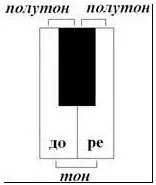
A tone includes 2 semitones. Appears between 2 adjacent whites when black is present between them. Or between 2 adjacent blacks, when between them is white. Or between white and black, when between them – another 1 white:
Frets and tonality
When listening to music, you can know that the melodies will have different pitches. In addition, the works are written in a certain way , the most famous of them are minor , major. The height of the fret a is the key.
It is possible to beat one work from different tonics, the sound will be identical, but differ in height. This means that the piece is played in different keys.
Other Important Learning Features
If someone is taking lessons for beginners on the synthesizer , they may still get used to the illiterate manner of playing, it will be difficult to change it later. In addition, you need to clearly outline your own tasks, for example, in a situation where there are no grandiose plans for conquering the stage, then, of course, you can simply watch the training videos of the tutorial on playing the synthesizer on the Web. For more serious plans, we recommend signing up for training to play the synthesizer with a professional. There are many similar schools and online courses in Moscow.

How to learn to play with two hands
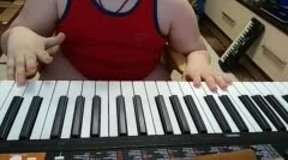 For those who are just learning the basics of learning to play a synthesizer , it is always very difficult to play, while using two hands. Okay , two – it’s also quite difficult for one to sort out the keys when you first decided to play. Consider an important nuance of the application: the extreme two fingers press on the white ones, and the middle three fingers on the dark ones. Knowing this simple rule will simplify your initial musical exercises.
For those who are just learning the basics of learning to play a synthesizer , it is always very difficult to play, while using two hands. Okay , two – it’s also quite difficult for one to sort out the keys when you first decided to play. Consider an important nuance of the application: the extreme two fingers press on the white ones, and the middle three fingers on the dark ones. Knowing this simple rule will simplify your initial musical exercises.
First you need to deal with the right hand. She is the leader – often plays the main melody, the left one – accompanies.
But the additional role does not mean that its improvement can be neglected, on the contrary, the left hand must also be constantly involved.
Play with both of them in turn, touching the keys with the pads.
If the chance to learn after 30-40 years
At this age, there is no need to worry. It is not necessary to be a child, completely different reasons will affect the result. And the result does not automatically mean that you have already achieved mastery. It matters more if the synthesizer becomes a positive part of life, other measurements are not so important. For example, how well you play, whether the compositions are exquisite, whether you perform in public … This is not as important as the fact that you can have fun.
The tuition reward varies. Someone plays very well. For others, the educational process helps to more fully enjoy listening to electronic music. Still others are just looking for how to get distracted, relax on a synthesizer e.
FAQ
I know how to play the piano, is it difficult to relearn for the synthesizer ?
Maybe. In this case, learning takes place in two stages: the first is the period of adaptation, the second is the improvement of skills.
What is the benefit of playing?
The synthesizer is capable of performing a public function, although it is often assumed that this is an instrument of a loner. The quality of the game is not related to gender, age, but only to individual physiological and mental abilities, strengths, weaknesses of personal qualities.
Summing up
When training is based on a book (and there are no sound examples in it), then in 99% of situations you will need outside help. Without adjusting the technique of the game, it will not be correct. The main difficulty that most students initially face is the combination of direct play and quality control.


